- Mahsa S. Y.
- Rug & Carpet
- 771 views
- 3 comments
Gabbeh is a type of Rug woven in smaller sizes and with longer piles. One of the main differences between Persian Gabbeh rugs and ordinary carpets can be seen in factors such as the size, the length of the piles, which sometimes reaches one centimeter, and the more significant number of wefts used in them, which, of course, is also a factor for the softness of rugs. But the main difference between selling and buying is how they are woven.
If you have observed the handwoven Rug or Gabbeh closely, it has three dimensions: length or carpet warp, width or carpet weft, and height or carpet pile. Gabbeh has the same structure as the carpet and has threads, wefts, and piles, but with two significant differences: 1. Size of piles 2. Several wefts: A rug weft is a series of parallel threads.
They pass each other through the warp threads horizontally in the carpet. The pile is also the knots that wrap around the threads and between the wefts of the structure and are then cut by a knife or knife.
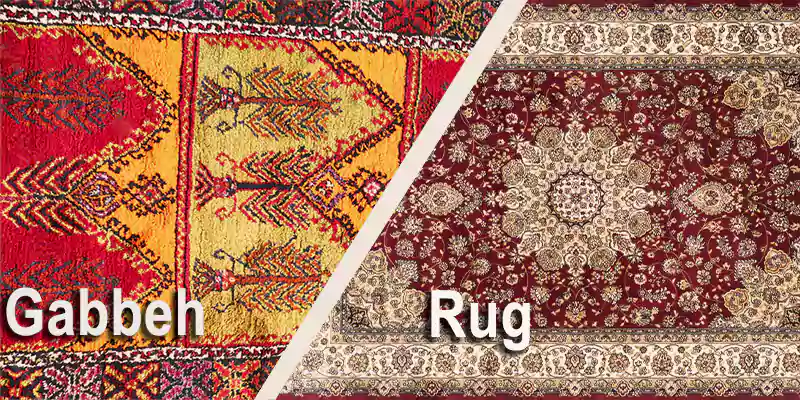
Gabbeh vs. Rug in terms of Thickness
Gabbeh is the same as a rug with longer piles, and more wefts are used in its texture. The number of wefts in some Gabbeh Persian rugs sometimes reaches from three to eight in each row, while in carpets, two under (thick) and upper (thin) wefts are used in each row. The length of the piles in Gabbeh sometimes reaches up to one centimeter, while in the carpet, this size is generally less than half a centimeter. In other words, there are piles and wefts in both Gabbeh and Rug; the difference is in their number and size.
Materials and Dyeing of Rug and Gabbeh
The difference between Gabbeh rugs and carpets in the fabrics used and the type of texture is another matter we must address.
Yarn Materials
Self-dyed wool mixed with goat hair is usually used in Gabbeh for weaving. But in addition to wool and cotton, the fibers used in common rugs include other options such as silk and fluff, and of course, in the texture of machine-woven rugs, these options have increased, and synthetic fibers are added.
Paints for Dying
In general, the paints used in dyeing, if they are natural, are at the same level in terms of the quality of the color of the Gabbeh and rug. Still, today, due to the difficulty of accessing natural dyeing and its higher price, some handwoven carpets are made of dyes. Artificial colors are used, which is much less observed in Gabbeh. However, the colors used in handwoven carpets typically have more variety than Gabbeh.
Cyrus Crafts; Luxury & Unique Products
Rug Loom vs. Gabbeh Loom
In general, carpet rugs are placed in two main categories: horizontal and vertical.
1. Horizontal or lying looms: As their name suggests, these looms are placed on the ground horizontally and lying down, and the weaver sits on them and weaves.
2. Vertical looms: this type of loom is placed either on the base or leaning vertically against the wall, and the weaver facing them performs the weaving work. In the picture below, you can see a vertical loom for weaving an ordinary Persian rug. By clicking on the image, you can visit a variety of Persian woven rugs.
Today, Oriental rugs are used vertically in more than 90% of cases, except in nomadic areas where using them in tents, such as Qashqai handwoven carpets, is difficult. However, precisely the opposite of carpets, in more than 90% of cases, looms of Gabbeh are horizontal because Gabbeh is mainly the art of nomads and are woven in different regions such as Bushehr, Shiraz, Khorasan, etc., and by nomads.
Rug vs. Gabbeh in terms of Mapping
The significant difference in the plan and mfap between the rug and Gabbeh is that mental patterning is made in Gabbeh, i.e., texture, and no map is used in their weaving. Each weaver can create whatever is in his mind. It puts it into operation, making no two stitches with the same design, which is not the case with carpet weaving. It is the magic used in the Gabbeh Persian Rug.
In other words, Gabbeh does not have a pre-drawn plan and design, but the carpet is woven based on the patterns that the designers designed, giving it many more basic textures and details. Since weaving the carpet requires a lot of planning and details, it takes more time to prepare than the carpet. It cannot have a higher weaving speed.
Differences between Weight and Size in Gabbeh and Rug
The difference between Oriental gabbeh rugs and ordinary rugs is significant in size and weight. Ordinary Persian rugs come in various sizes, the three sizes of 9, 6, and 12 square meters being the most common. But in the case of Gabbeh, the standard dimensions woven are all under 6 square meters. In terms of weight, the Persian Gabbeh rug is similar to the carpet, but due to its smaller size, it typically has less weight.
Summary
In short, it can be said that:
1. A Gabbeh is more textured than a rug
2. Gabbeh has longer piles
3. Gabbeh is softer
4. Gabbeh is heavier
5. Gabbeh, unlike rug, does not have many patterns
6. Gabbeh is not woven with a pre-drawn plan
7. Gabbeh Persian rugs are woven in smaller dimensions
CyrusCrafts Chain Stores: North America
CyrusCrafts NA is seriously pleased to show you the evolution of Persian rug chain stores in North America. The mission has always been to bring beauty and craftsmanship of the most exquisite Persian carpet to homes and offices and we are glad we have done this in several key locations.
CyrusCrafts Toronto, Ontario Online Rug Store
Since we opened our store a couple of years ago, people who are interested in rugs and the arts in Toronto, Ontario have come to know us well.
From the elegant round rugs placed at the doorsteps of classy houses to the bright and stunning area rugs placed in the living room, we offer an enormous stock of Persian rugs in Toronto and area rugs in Toronto that match every individual preference.
The Final Words
This article gave an overview of the fundamental differences between carpets and rugs. If you have any questions or comments about this content, please write them as comments or share them with us by clicking on the WhatsApp icon. CyrusCrafts customer service experts are always ready to answer you.
CyrusCrafts is an international sales website selling Persian arts and crafts products that send your orders to all parts of the world. Just fill out the order form for the desired product to place an order. The good news for residents of the United States of America, Canada, and Middle Eastern countries such as the United Arab Emirates, Turkey, Iraq, Qatar, and Egypt, as well as countries such as India and Pakistan, is that the shipping time and cost for these countries is meager, due to the presence of CyrusCrafts offices in these areas.


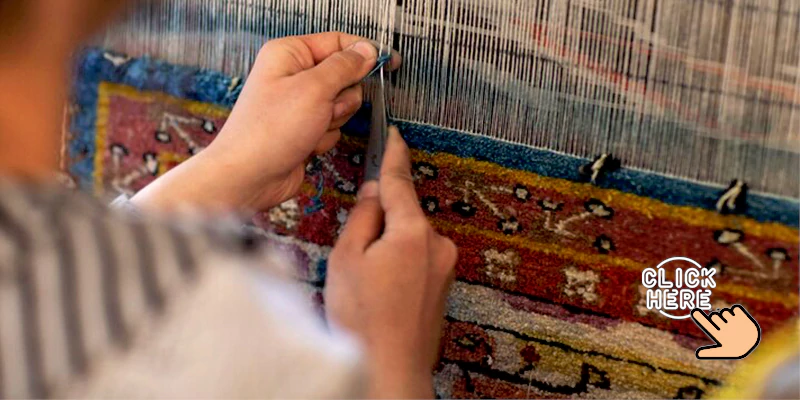
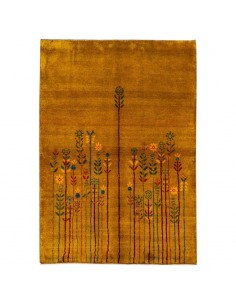

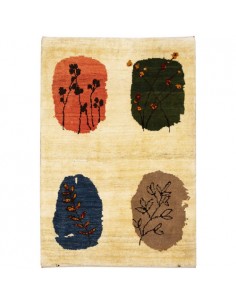

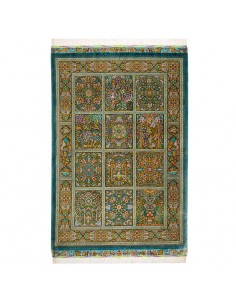

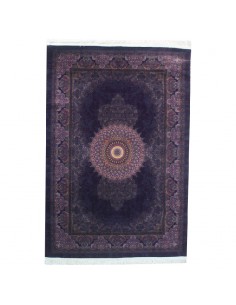

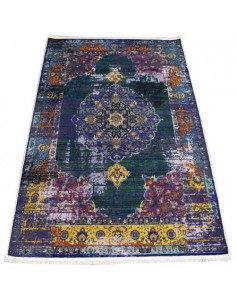

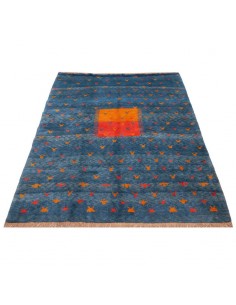






Comments (3)